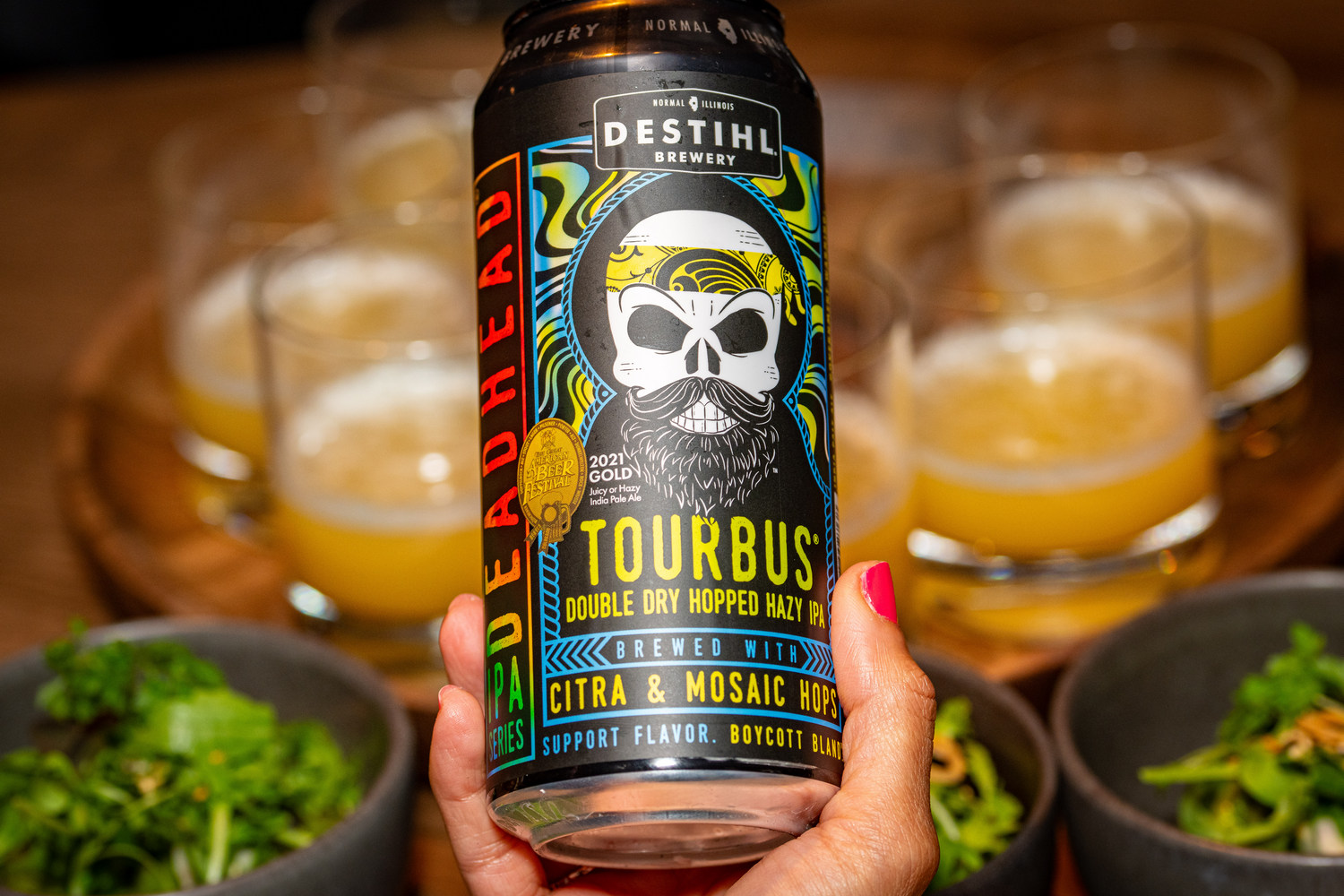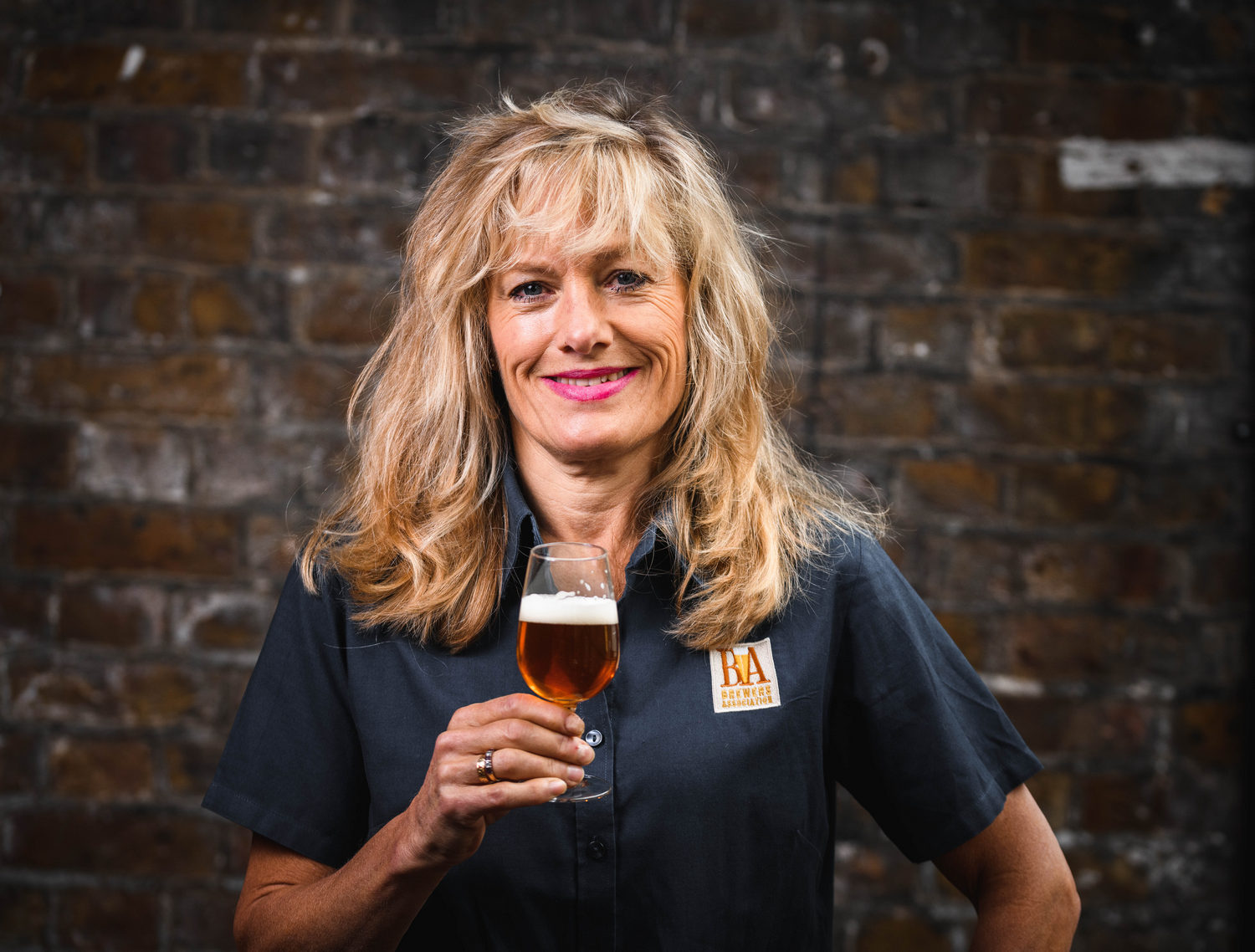Lotte Peplow, the Brewers Association’s American craft beer ambassador for Europe, experiences a tasting session matching beer and smoked foods.

Penn Quarter Porter, from Wasgington’s DC Brau, which was paired with yellow tail fish with a citrus sauce and Castillo coffee at a special London event. Photographs: Nic Crilly Hargrave
Beer and food is a winning combination. Who hasn’t savoured a pint of well-conditioned cask ale with a pie and chips, or relished a crisp, cold lager alongside a fiery curry?
Over in the States, American craft brewers are elevating this synergy to unprecedented heights by exploring the interplay between food cooked over wood, fire, and smoke, in conjunction with beer.
Much like hops influencing the character of beer, the choice of wood and its application in cooking plays a comparable role in culinary artistry. Wood ignites within the temperature range of 260º to 370º Celsius, and as it ascends to between 370º and 340º, the magic of cooking unfolds. When gases from wood escape without burning, smoke is formed. But if a fire is too hot or the smoke too assertive, it can impart bitter flavours.
Just as a brewer carefully selects and adds various hop varieties at distinct stages in the brewing process, the wood imparts diverse flavour notes to food, contingent upon factors like time, temperature, ignition point, and the nature of the smoke. Imagine a gentle, delicate touch of smoke, akin to the subtle hop notes found in a Kolsch, or picture the robust impact of oak, resonating like the boldness of an IPA, and then consider the roasted, charred notes reminiscent of a stout or porter.
Grilling food over flame brings out the Maillard reaction, a complex series of chemical reactions between amino acids and reducing sugars that produce a sweet, caramelly, seared flavour, as found on the char of a roasted or grilled duck breast, steak or burger. Roasted malts found in porters and stouts undergo the same chemical reaction and thus pair well with these types of food. The Maillard reaction creates unique flavours in both beer and food. Put the two together and the flavour profile is greatly enhanced.
Grilling over wood-smoked flame will heighten the depth of flavour, and different woods — such as ash, birch, oak, cedar, maple, hickory or juniper — will impart subtle flavour differences to each dish. Beer has a wider flavour spectrum than almost any other beverage, and its different ingredients, flavours, and mouthfeel makes it the perfect partner for foods with a high fat content and strong flavours.
The Brewers Association recently demonstrated the interplay between smoke, fire, beer, and food at new London restaurant, Humo, in a bid to broaden the awareness of beer as a quintessential companion to fine dining.
“Exploring the idea of how wood, fire, and smoke impact pairings and flavour is the next step in beer-food pairing,” says Adam Dulye, the Brewers Association’s executive chef, and a renowned beer pairing expert. “All too often we talk simply about an ingredient, when the cooking methods, especially the selections of wood available, are as important as the beer you chose to serve with the course.”
The event unfolded with seven exquisite courses of smoke-infused delicacies, matched with seven equally amazing American craft beers, chosen to harmonise with the flavours in the food. American craft brewers are renowned the world over for their skill, expertise, and creativity in crafting highly innovative, experimental, and world-class quality beers, and this was a golden opportunity to showcase their talents.



Left to right: 903 Brewers’ Polynesian Whip Cream Ale with Amalfi lemon tart, Destihl Tourbus Deadhead IPA with a garden salad, and Coronado Weekend Vibes IPA with Kombu-Gin-Me sea bream
The menu and pairings were devised by the Humo chefs and Adam Dulye, and comprised:
- Trout lightly smoked over juniper branches, with three-month aged caviar smoked over HP18 oak and Rausu Konbu (a type of Japanese dashi or stock), matched with The Bold Mariner Digital Goodbye pilsner. A crisp, light accompaniment to the subtle, smoky notes of the fish.
- Kombu-Gin-Me sea bream, dry-aged for nine days with fermented datterino (tomato) and 25-year-old Balsamic vinegar, matched with Coronado Weekend Vibes IPA. Bursting with tropical fruit notes and resinous dankness, this hazy IPA was the perfect partner for the fermented flavours of the dish.
- A garden Salad of smoked Agria potatoes, mizuno (miso), edamame beans, and East Sussex sansho pepper, matched with Destihl Tourbus Deadhead Hazy IPA. A wonderful smoky aroma and taste from the potatoes captured the essence of this lush tropical, citrus-hop hazy IPA.
- Yellow tail with a citrus sauce and Castillo coffee, matched with DC Brau Penn Quarter porter. The fish was dry-aged for nine days and smoked over hay. Bitter coffee notes in the sauce were enhanced by similar notes in the beer, along with a hint of dark chocolate. The acidity from the lime-based sauce was counter-balanced by the malty sweetness of the porter.
- Kagoshima A4 black cattle sirloin with sudachi dashi, matched with Heavy Riff Velvet Underbrown. A smooth and creamy brown ale merged with the show-stopping, meaty flavours of the beef in a winning combination.
- Cauliflower baked under ash with Rokko miso and nori, matched with Virginia Beer Co Wee Heavy Waypost. Aged in single malt whisky barrels with notes of caramel and subtle smoke, this Scotch Ale harmonised with the smoky flavours of the vegetable to produce a ‘wow’ factor.
- Amalfi lemon tart, almond base, oak ‘burnt’ meringue, matched with 903 Brewers Polynesian Whip Cream Ale. Pineapple and vanilla ice cream flavours of the beer were a marriage made in heaven with this divine lemon tart.
Vegetarians were catered for with an equally eclectic and exotic range of predominantly vegetable-based dishes paired with American craft beer.
Many of the American craft beers featured above are award winners from highly prestigious international beer competitions, and it’s easy to see why. The quality shines through and the bold, hop-forward, ever-changing flavours are testimony to American craft brewers’ collective expertise.
American craft beer pioneered the global craft beer movement some 40 years ago and continues to push the boundaries of flavour and creativity. The UK is an important trading partner for the USA and the second largest for US craft beer exports, behind Canada, accounting for 7.3% of all global craft beer exports in 2022.
American craft beer can take food to places it’s never been before, and is available from online retailers such as Athletic Brewing, Sierra Nevada shop, Beers of Europe, Beer Merchants, Beer Gonzo, House of Trembling Madness, various bottle shops, off-licences, online subscription services, and supermarkets, and select pubs and bars.
Brewers are being invited to register for the World Beer Cup 2024. Registration opens in November. More details can be found at worldbeercup.org.
The Brewers Association
The Brewers Association (BA) is the not-for-profit trade association dedicated to small and independent American brewers, their beers, and the community of brewing enthusiasts. The BA represents 5,600-plus US breweries. Its independent craft brewer seal is a widely-adopted symbol that differentiates beers by small and independent craft brewers. The BA organises events including the World Beer Cup, Great American Beer Festival, Craft Brewers Conference, and BrewExpo America, Homebrew Con, National Homebrew Competition, and American Craft Beer Week. The BA publishes The New Brewer magazine, and Brewers Publications is the leading publisher of brewing literature in the US. Beer lovers are invited to learn more about the dynamic world of craft beer at CraftBeer.com and about homebrewing via the BA’s American Homebrewers Association and the free Brew Guru mobile app.
About the author

Lotte Peplow is the American craft beer ambassador for Europe for the Brewers Association, and is based in London. She is a certified cicerone, BDI accredited beer sommelier, beer writer, author, beer communicator, international beer judge, homebrewer, and beer lover.



